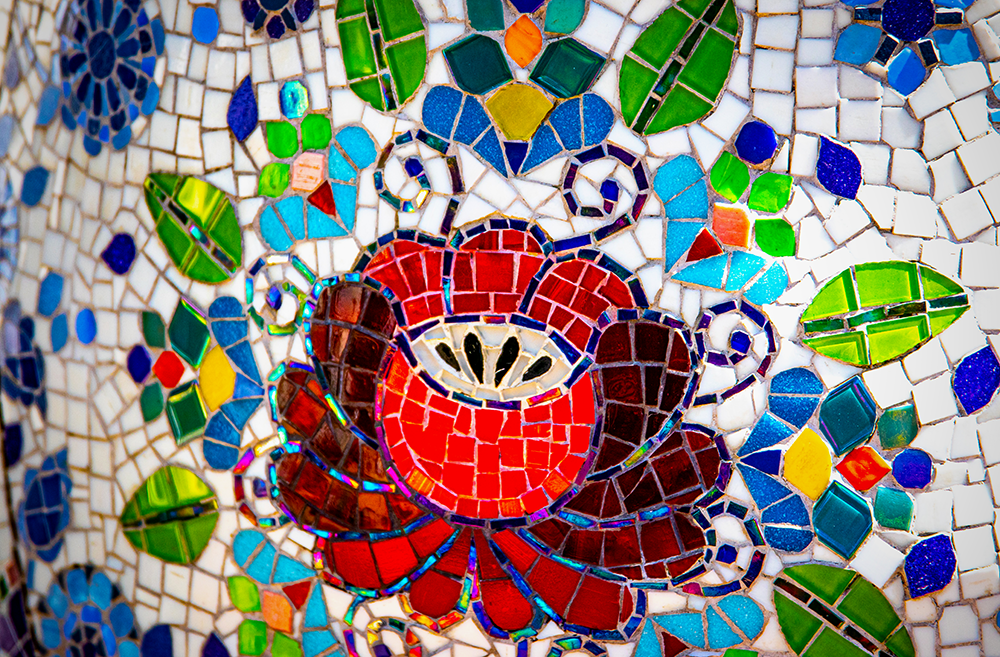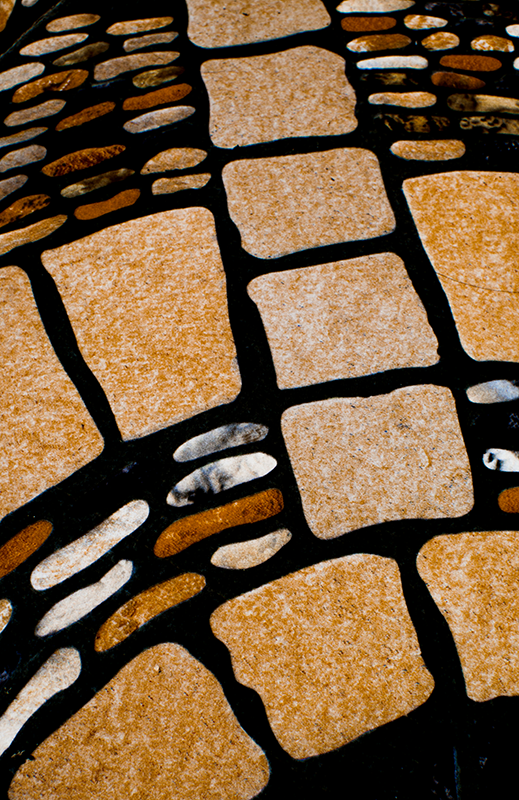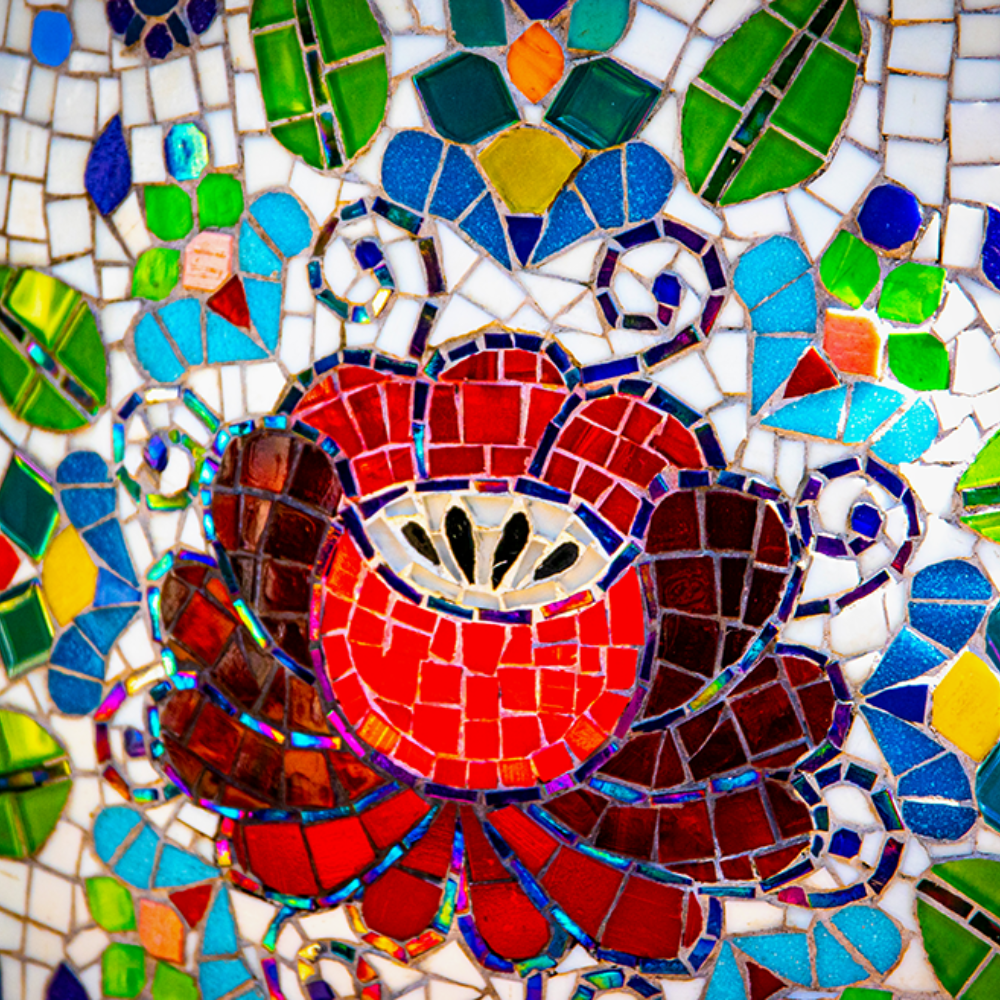Have you ever marveled at a stunning piece of mosaic art, its myriad of colors and textures seamlessly woven together to tell a story or depict a scene?
Mosaic art, with its roots deeply embedded in ancient history, uses small pieces of materials like glass, stone, or ceramics to create spectacular, detailed designs.
This form of artistic expression that combines tiny pieces of materials to create intricate designs and images has a rich history that dates back thousands of years.
It is celebrated for its ability to depict detailed narratives and breathtaking patterns on both floors and walls.
But have you ever paused to wonder why this mesmerizing art form is named "mosaic"?
This article takes you on a journey through the etymology, historical progression, and cultural depths of mosaic art, exploring how it has evolved and why it continues to enchant us today.
Key Takeaways:
- Origins and Evolution: Understanding how mosaic art has evolved from ancient times to modern days, highlighting its cultural and historical significance.
- Techniques and Materials: Exploring the diverse materials and methods used in mosaic art over the centuries, from ancient stone tesserae to modern glass pieces.
- Cultural Impact: Examining the influence of mosaic art across different civilizations, including the Roman Empire and Byzantine era, and its role in both religious and secular settings.


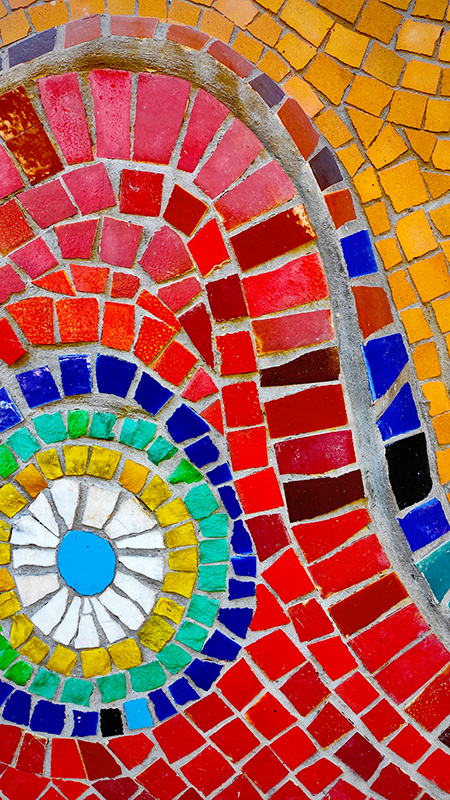
Etymology of Mosaic Art
The term "mosaic" derives from the Latin "mosaicus" and Greek "mouseios," which are associated with the Muses, the goddesses of the arts in Greek mythology.
This connection underscores the art form's association with creativity and artistic excellence.
Mosaic art involves assembling small pieces of material, known as tesserae, which can be made of glass, stone, ceramic, or other substances, to form a unified image or pattern.
Historical Beginnings and Ancient Techniques
Mosaic art is one of the earliest known examples of artistic endeavor, with origins that can be traced back to the ancient civilizations of the Middle East.
The earliest examples were simple pebble mosaics, which later evolved during the Greek period to include cut stone tesserae, allowing for more detailed and complex patterns.
These early mosaics primarily decorated floors in public and private buildings, showcasing scenes from mythology and everyday life.
Roman Mosaics: Expansion and Refinement
As the art form spread to the Roman Empire, it saw significant advancements.
Roman mosaics became more sophisticated with the introduction of glass tesserae, which provided a wider range of colors and a more reflective surface.
This era also saw the creation of impressive golden mosaics and figural wall mosaics that adorned the villas of the wealthy and public spaces, reflecting both the affluence and cultural aspirations of the Roman society.
Byzantine Mosaics: A New Era of Brilliance
The Byzantine era marked a golden age for mosaics, particularly in religious contexts. The Hagia Sophia, with its expansive golden mosaics, epitomizes the height of Byzantine mosaic art.
These mosaics often featured Christian scenes and were characterized by their luminous gold backgrounds and the use of vivid tesserae to create images with emotional depth and spiritual significance.
Transition in Materials: Natural to Synthetic
The journey of mosaic materials has seen a significant transformation from the use of naturally occurring stones and minerals to the incorporation of synthetic and manufactured pieces.
Initially, ancient artisans relied on colored stones, ceramic tesserae, and gold tesserae, which were painstakingly cut and placed to create compelling imagery.
Over time, the introduction of glass and other synthetic materials allowed for a broader spectrum of colors and finer detail in mosaic artwork.
This shift not only expanded the artistic palette but also enhanced the durability and vibrancy of the mosaics.
Mosaic Techniques Through the Ages
Mosaic making techniques have evolved dramatically from the simple placements of the ancient Greeks to the sophisticated methods of the Byzantine era.
Early mosaics primarily featured geometric patterns and were used to adorn floors and walls of public and private buildings.
As the art form progressed, particularly during the Roman period, techniques became more refined, with the introduction of figural mosaics that depicted intricate scenes from mythology and everyday life.
The Byzantine artisans further advanced these techniques, employing finer tesserae and complex layering methods to achieve depth and luminosity in their religious and imperial commissions.
Influence of Roman Mosaic Art on Design
Roman mosaic art, with its intricate patterns and detailed imagery, has left a lasting impact on contemporary design.
The use of small, colored pieces to create images has transcended time, influencing everything from modern floor mosaic designs to wall decorations.
Today, designers draw inspiration from the impressive golden mosaics and beautiful mosaic pavements of ancient Rome, integrating these classical elements into modern spaces.
This fusion of old and new elevates the aesthetic appeal and adds a historical depth that enriches the viewer's experience.
The gladiator mosaic, a famous example from ancient Rome, showcases the skill and creativity of Roman artists in depicting dynamic and realistic scenes.
Modern mosaic artists often reference such historical pieces to blend traditional techniques with contemporary themes.
The result is a vibrant tapestry of past and present, where ancient motifs are reimagined in modern settings.
This ongoing dialogue between the old and the new helps keep Roman influence alive in the visual arts, proving that historical art forms can still inform and inspire current artistic endeavors.



Resurgence of Mosaic Art in the 20th Century
The 20th century witnessed a remarkable revival of mosaic art, blending traditional techniques with modern aesthetics.
This period saw the emergence of impressive golden mosaics that adorned the walls of prestigious buildings, echoing the grandeur of Byzantine craftsmanship.
Local artists were pivotal in this resurgence, applying ancient skills to both public and private spaces, thereby ensuring that the mosaic tradition remained vibrant and relevant in contemporary art scenes.
Moreover, the century was marked by significant innovations in mosaic materials and methods.
The introduction of new mosaics in iconic locations such as St. Peter's Basilica not only highlighted the artistic evolution but also served as a testament to the enduring appeal of mosaics.
These modern creations often featured intricate mosaic patterns that were complex yet visually stunning, demonstrating how historical art forms could be reinterpreted in new and exciting ways.
Splendor of Golden Mosaics in Sacred Spaces
The use of impressive golden mosaics in religious architecture, particularly from the Byzantine era, has left a lasting mark on the aesthetic and spiritual landscape of sacred spaces.
These mosaics, often found adorning the ceilings and apses of cathedrals, shimmer with a heavenly glow, creating a transcendent atmosphere intended to lift the spirits of worshippers.
The gold leaf tiles catch the light, giving the impression that the artwork is divinely illuminated.
This technique not only enhanced the spiritual ambiance but also demonstrated the wealth and power of the church during that era.
One notable example is the ceiling mosaic of St. Peter's Basilica, which dates back to the Renaissance period.
This masterpiece showcases the intricate craftsmanship and artistic ambition of that time.
The mosaic depicts biblical scenes and saints, each figure outlined with golden tiles that highlight their importance and sanctity.
The use of gold in these mosaics goes beyond mere decoration; it serves as a symbol of eternal light and divine presence, reinforcing the religious messages conveyed through the art.
These mosaics, shimmering with divine light, are not just decorations but narrations in gold.
Each piece, meticulously placed, tells a story from the scriptures, reflecting both artistic mastery and deep religious reverence.
The basilica's dome, designed by Michelangelo and later embellished by Giuseppe Cesari, showcases these golden tesserae that catch the light, bringing heavenly scenes to life.
Furthermore, the use of gold in the mosaics of St. Peter’s Basilica serves more than an aesthetic purpose; it symbolizes the eternal light of God, a core theme in Christian iconography.
This choice of material and color in the basilica’s mosaics has influenced religious art globally, setting a benchmark for how art can function as a conduit for spiritual experience.
The golden mosaics thus bridge the gap between divine and earthly realms, making the basilica not only a place of worship but also a canvas of historical and spiritual storytelling.
Merit of Mosaics in Contemporary Spaces
Golden mosaics, with their shimmering allure, have transcended time to establish themselves as a staple in modern architectural design.
These mosaics, often seen as relics of the past, have found new life in contemporary spaces, from luxurious hotels to private residences.
The reflective properties of gold tesserae capture light and create a dynamic interplay of brilliance and color, which architects and designers leverage to add a touch of elegance and opulence to their creations.
Moreover, the application of impressive golden mosaics is not just about aesthetics but also about crafting an ambiance that resonates with luxury and history.
In places like high-end spas and grand lobbies, golden mosaics provide a nod to the grandeur of historical sites like St. Peter's Basilica, yet are reimagined in a way that feels fresh and relevant.
This blend of old-world charm with contemporary sophistication underscores the versatility and enduring appeal of mosaic art in modern design narratives.


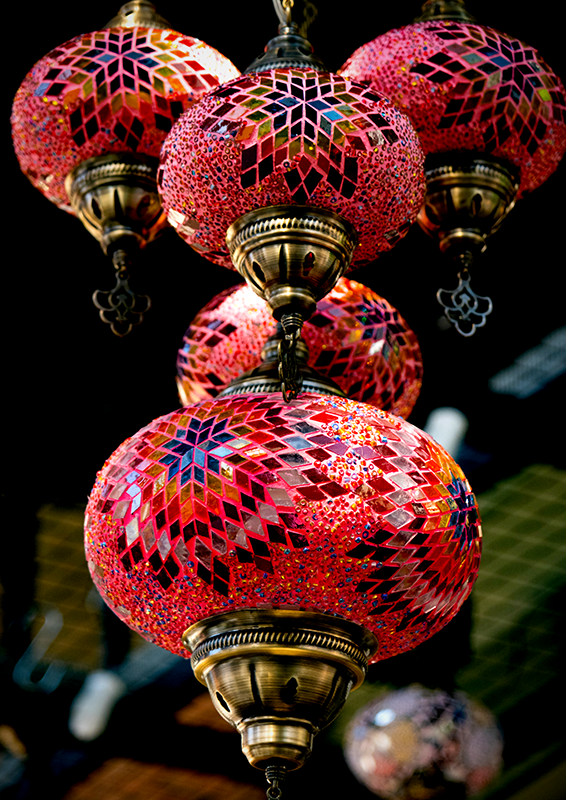
Integration of Manuscripts and Wall Mosaics
The intricate designs and rich narratives captured in Byzantine manuscripts and wall mosaics have not only preserved history but have also inspired contemporary artists and designers.
These ancient artworks provide a visual symphony of colors and symbols which contemporary creators reinterpret in various media, including digital art, fabric design, and public installations.
The depth of storytelling and symbolism in these mosaics and manuscripts offers a profound source of inspiration for projects aiming to blend cultural heritage with modern artistic expression.
In educational and cultural institutions, reproductions of these Byzantine themes can often be seen, serving both decorative and instructional purposes.
For instance, detailed replicas of wall mosaics in university art departments help art students understand the technical and thematic complexities of historical art forms.
This educational approach not only keeps the ancient art form alive but also enriches the learning experience by providing direct interaction with the aesthetics and techniques of the past.
Byzantine manuscripts often served as blueprints for the grand wall mosaics in religious and imperial settings.
These manuscripts, rich with illustrations, guided mosaicists in their craft, ensuring that the visual narratives aligned with theological doctrines.
The symbiosis between manuscript art and mosaic design during the Byzantine era illustrates a seamless transfer of iconography and style, which helped maintain consistency in religious storytelling across different mediums.
In particular, the wall mosaics inspired by Byzantine manuscripts are evident in structures like the Hagia Sophia, where scenes depicted are almost poetic in their execution, mirroring the intricate details found in illuminated texts.
This cross-medium influence highlights the meticulous planning and artistic foresight that characterized Byzantine artistry, making it a beacon of cultural and religious expression that resonated throughout the empire and beyond into the modern era.
Revival & Preservation of 20th Century Mosaics
The 20th century witnessed a significant revival in the use of mosaics as a form of artistic expression, particularly in public and institutional buildings.
This resurgence was not just about continuing an ancient tradition but also about reinventing it to reflect contemporary values and aesthetics.
Artists began creating images that captured modern life, using traditional mosaic techniques to bridge the past with the present.
This period also saw the rise of conservation efforts to preserve ancient mosaics, which were increasingly recognized as cultural and historical treasures.
A pivotal aspect of this revival was the emphasis on using mosaics for educational and commemorative purposes.
For instance, the mid-20th century mosaic floor in a renowned public institution often depicted significant historical events or figures, serving both a decorative and didactic function.
These artworks not only beautified spaces but also functioned as narrative tools that educated the public about important historical narratives.
The preservation of older mosaics, alongside the creation of new ones, highlighted a growing appreciation for mosaic art as a vital link to both past and future generations.
Mosaic Art in Architectural Marvels
Mosaic art has not only embellished floors and walls but has also played a crucial role in the architectural identity of numerous cultures.
For instance, the beautiful mosaic pavement found in the temple building projects of the 20th century reflects a deep integration of art and architecture.
These mosaic floors, with their detailed designs and vibrant colors, enhance the spiritual and aesthetic atmosphere of the spaces they occupy.
In addition, other important Venetian mosaics of the 20th century have showcased the skill and creativity of mosaicists from around the world.
These artworks often serve as cultural landmarks, attracting visitors who marvel at the intricate details and storytelling embedded within the tiles.
Each piece is a patchwork of history and innovation, capturing the essence of the locale and the artistic vision of its creators, thus cementing the global significance of mosaic art in architectural wonders.

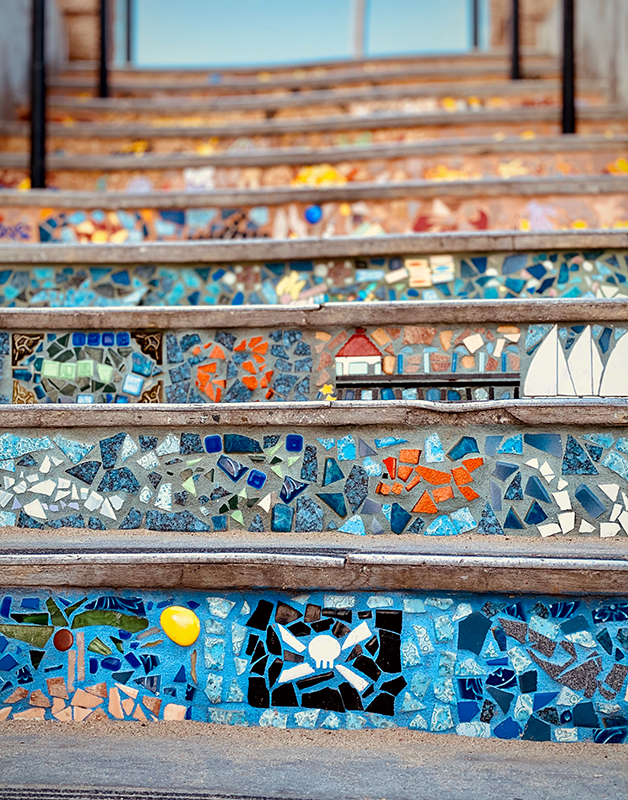

Eastern Artistic Influences on Mosaics
Byzantine mosaics are renowned for their spiritual and luminous qualities, often enhanced by eastern artistic influences that traveled along trade routes.
The integration of bright colors and intricate designs from the East transformed the aesthetic of Byzantine religious art, making it one of the most revered forms of mosaic art in history.
These elements are evident in the stunning mosaics of San Cipriano Church and the revered Peter's Basilica, where the whole interior is adorned with detailed mosaic panels that narrate religious stories and glorify two patron saints.
During the high middle ages, Byzantine artists began incorporating more diverse themes and techniques into their mosaic work, a testament to the cross-cultural interactions of the period.
The beautiful mosaic pavements and wall designs in these religious settings not only served a decorative purpose but also functioned as a medium for spiritual expression.
The use of eastern motifs and symbols in these mosaics brought a new layer of meaning and beauty to Byzantine art, showcasing the power of cultural exchange in artistic evolution.
Mosaic Art as a Cultural Tapestry
Mosaic artwork has been a canvas for cultural expression across various civilizations, each adding its unique touch to this intricate art form.
In Roman villas, floor mosaics were not just decorative but also a status symbol that echoed the affluence and educational pursuits of the homeowner.
Moving east, the influence of Eastern artistic traditions can be seen in the vibrant colors and intricate designs that characterize Islamic mosaics, which often avoided figural representations in favor of stunning geometric patterns and calligraphy, reflecting religious beliefs and artistic preferences.
Spiritual Dimensions in Religious Settings
In religious contexts, mosaics have served to communicate spiritual narratives and venerate sacred figures through visually striking designs.
Christian mosaics, for instance, are prevalent in many cathedrals and basilicas, where they illustrate scenes from the Bible and portray patron saints with rich symbolism.
Notable examples include the impressive golden mosaics in St. Peter's Basilica, which narrate key biblical events with high artistic quality and emotional depth.
These mosaics not only enhance the spiritual ambiance but also serve as a form of catechism, teaching the faithful through art.
Renaissance and Beyond: Modern Mosaics
During the Renaissance, mosaic art enjoyed a revival in Western Europe, with artists like the Greek masters who brought their knowledge to Italy.
This period focused on perfecting techniques and often replicated famous paintings in mosaic form.
In modern times, artists continue to push the boundaries of mosaic art by experimenting with different materials and techniques, creating everything from abstract wall art to decorative garden art.
Mosaic Art Across Different Cultures
Mosaic art has not been confined to the Western world.
In the Middle East, mosaic floors and wall decoration were prominent in Islamic architecture, often featuring geometric patterns and calligraphy.
Similarly, in Eastern Orthodox Christian countries, mosaic iconography played a crucial role in religious and cultural expressions.



Artistic Process: From Concept to Creation
Creating mosaics is a labor-intensive process that requires precision and creativity.
Artists begin with a concept, then select materials that best suit their vision, whether they are stone, ceramic, or glass tesserae.
The pieces are meticulously placed on a flat surface, adhered with a specific type of mortar, and then grouted to complete the artwork.
Mosaic Art Today: Trends and Innovations
In contemporary art, mosaic techniques have evolved to include digital and photographic imagery, allowing for more personal and politically charged expressions.
Modern mosaics continue to adorn public spaces and homes, proving that this ancient art form still resonates with today's aesthetic and cultural values.
Continuing the Legacy of Mosaic Art
Mosaic art, with its rich history and evolving techniques, remains a vibrant form of artistic expression.
From its ancient roots in the Middle East to its development in the Roman Empire and its spiritual significance in the Byzantine era, mosaic art has continually adapted, reflecting the cultural values and technological advancements of each period.
Today, it stands as a testament to human creativity and the enduring desire to assemble small pieces into beautiful, transformative works of art.
It's clear that this art form is much more than a method of decoration.
It's a profound narrative tool that has captured human experiences, spiritual beliefs, and aesthetic ideals across centuries.
Mosaic art not only decorates spaces but also transforms them, telling stories that are as enduring as the pieces that compose them.
As we move forward, the legacy of mosaic art continues to inspire artists and art lovers alike, proving that when small pieces come together, they create something truly magnificent.
How will you let mosaic art inspire you?

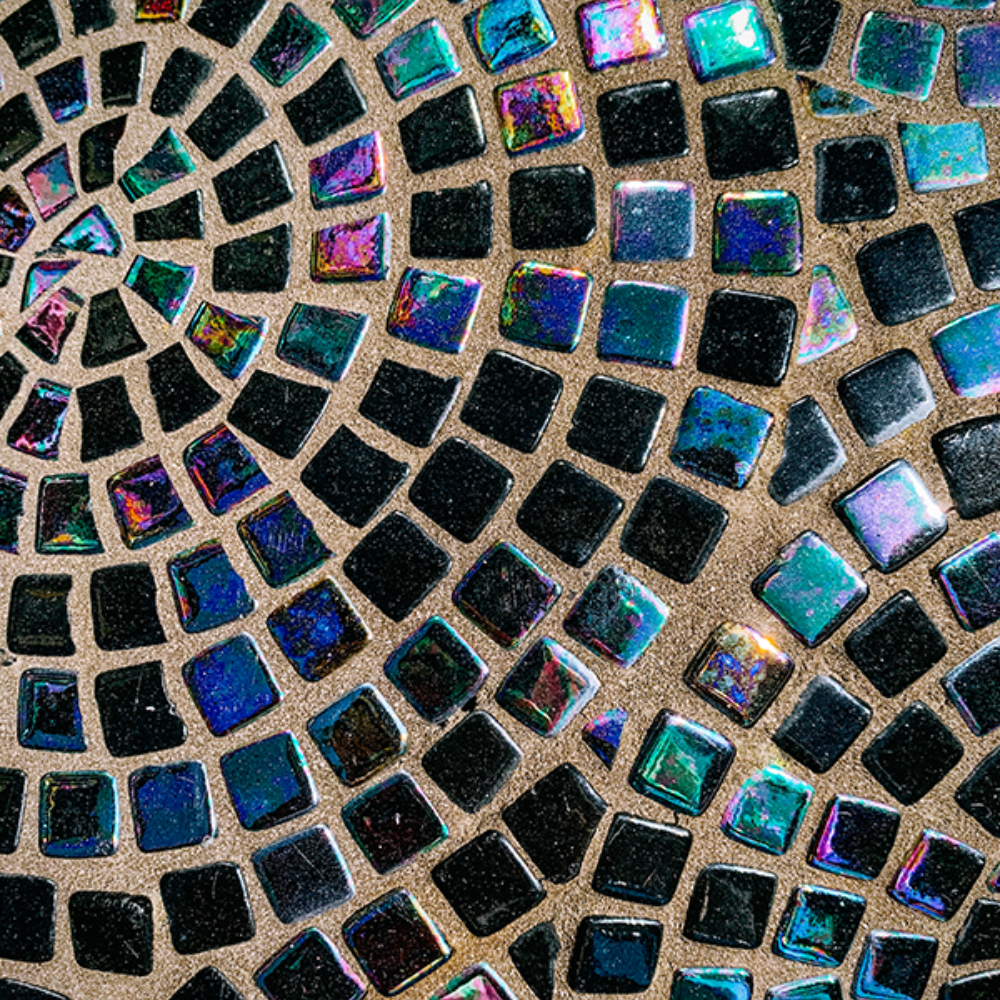

Mosaic FAQs
Welcome to the FAQs section!
Here, we dive into the colorful world of mosaic art, exploring its intricate details and rich history.
Whether you're a curious newcomer or a seasoned art enthusiast, these frequently asked questions will enhance your understanding and appreciation of this timeless art form.
From the basics of tesserae to the evolution and cultural significance of mosaics, get ready to uncover the fascinating layers behind these stunning creations.
Let's embark on this artistic journey together!
What are tesserae in mosaic art?
Tesserae are the small pieces of glass, stone, ceramic, or other materials used to create a mosaic. These pieces are carefully arranged to form patterns or detailed scenes.
How did mosaic art evolve from ancient times to modern days?
Mosaic art began with simple pebble designs and evolved through the Greek and Roman periods with the introduction of cut stone and glass tesserae. The Byzantine era saw the use of golden backgrounds and religious themes. Modern mosaic art incorporates a variety of materials and techniques, reflecting contemporary themes and personal expressions.
What is the significance of mosaic art in cultural and historical contexts?
Mosaic art has served both decorative and functional purposes, reflecting the religious, social, and cultural values of various civilizations. It has been used to depict historical events, religious narratives, and everyday life, serving as a historical record and a medium of personal and communal expression.
What materials are commonly used in creating modern mosaics?
Modern mosaics are not limited to traditional materials like stone or glass. Artists now incorporate an array of materials including ceramics, shells, beads, mirrors, and even recycled or upcycled items. This diversity allows for unique textures and reflections, giving each piece a distinctive character.
Can mosaic art be used in outdoor spaces?
Absolutely! Mosaic art is incredibly versatile and durable, making it perfect for outdoor installations. Many artists use weather-resistant materials and sealants to ensure that the mosaics withstand the elements, whether it's adorning garden walls, pathways, or public spaces.
How do I care for and maintain mosaic artworks?
Maintaining mosaic art involves regular cleaning to remove dust and debris, using a soft cloth or brush and gentle, non-abrasive cleaners. For outdoor mosaics, it's important to check for any signs of damage or wear caused by weather conditions and to apply sealant periodically to protect the artwork.
What are some popular techniques used in mosaic artistry?
There are several techniques that mosaic artists employ to bring their visions to life. The direct method involves directly placing tesserae onto the mounting surface, ideal for small projects and workshops. The indirect method, suitable for large-scale artworks, involves placing tesserae face-down onto a backing paper, which is then transferred to the mounting surface. Another technique, the double indirect method, allows for even more precision and is often used for complex designs and restoration work.
Are there any famous historical mosaics that I can visit?
Yes, many ancient mosaics are preserved and displayed around the world. Notable examples include the stunning mosaics at the Villa Romana del Casale in Sicily, the intricate designs of the Basilica of San Vitale in Ravenna, Italy, and the vibrant mosaics of the Hagia Sophia in Istanbul, Turkey. These historical sites offer a glimpse into the ancient techniques and themes that have shaped mosaic art over the centuries.
How can I start creating my own mosaic art?
Starting your own mosaic project can be both exciting and rewarding. Begin by choosing a simple design and gathering your materials—tesserae, adhesive, and a base like a tabletop or a wall surface. Workshops and online tutorials can provide step-by-step guidance, and community art centers often offer classes to help beginners learn the basic techniques and safety measures involved in mosaic creation.



Curious about creating your own mosaic art? Check out Julie Weilbacher's video!
Want even more content about creativity and art?
Be sure to check out all of our creative chronicles!
Interested in exploring the world of mosaics?
Check out some of our other articles:
-What materials can you use for mosaics?
-What are the 3 main types of mosaics?
-What are the elements of mosaic art?
-What is another word for mosaic?

